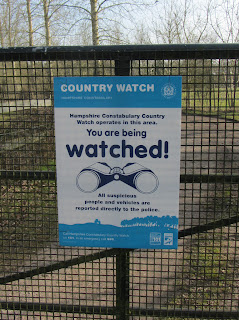 | |
| Getting to grips with green shieldbugs in winter |
Residents of Reading
might have noticed suspicious goings on of late. A scruffy young-ish bearded
man, plodding slowly along a hedgerow or gazing intently at the bark of a tree,
or maybe sifting through some leaf litter. I haven’t gone mad, though – at
least I don’t think so –nor am I any threat to public safety. I’ve been looking, in deliberate fashion, for
insects.
I had tended in the past to let them come to me, by chance,
when they were sat somewhere obvious. But such is my newfound fondness for our
six-legged neighbours that I don’t find enough of them that way to sate me. If
you really want to find more insects you have to take up ‘leaf-twitching’.
At least, that’s what some people call it (named for the
surprisingly profitable habit of turning over a leaf to see what is lurking on
the other side) although for me it’s a bit too in thrall to birding, as if it
were a mere subsidiary or tribute activity. One might instead call it bug-hunting,
but that sounds like an activity put on either for children or Americans, and I
don’t think pedantic entomologists would like it (since to them ‘bug’ refers to
the order Hemiptera only). So I’d
like to propose we henceforth refer to insect hunting as ‘creepy crawling’.
Firstly, it’s an excellent pun on a childish name for invertebrates. Secondly,
it calls to mind the especially slow pace of travel required to really look
properly and start spotting things in their hiding places. And thirdly, it’s
more likely to be understood by the general public, who might not know what a
leaf twitcher is but will almost certainly upon seeing me out and about say
‘what’s that creep doing crawling in the undergrowth?’
 |
| Creeps beware... |
Despite appearances I’m not an expert creepy-crawler (though
I am practicing!) and for the most part this year it’s been too cold for
insects to be very active. But between cold spells I and they have still woken
up enough that I have already seen quite a variety, from springtails to green
leafhoppers, from the year’s first bumble- and honey bees to wintering green
shieldbugs, and from small, barely animate blobs which I’m assured are scale
insects to the marvellous big-eyed ground beetle, Notiophilus biguttatus. And a quick flash of lemon from a brief
sighting of a brimstone on the wing.
For the jaded or frustrated birder who despairs of ever scoring
a decent self-found bird close to home but is prepared to be taxonomically
imaginative, the opportunities offered by creepy-crawling are endless. Take,
for example, one of those chilly days in late February. I was wondering slowly
along the edge of The Wilderness (part of Reading University’s main campus),
with no particular expectation of seeing anything new. Speculatively I grabbed
hold of a fir branch I was passing, shook it, and dislodged two small insects.
One, a fly, did as its name suggests and veered away on the wing. The other dropped
onto my sleeve. A tiny, bug-eyed, greenish brown little thing that looked
characteristically like a psocid – known variously as the barkflies or booklice
– crouched there dozily, and I ushered it into a collecting pot without
protest.
 |
| A psocid, NB, not T.brincki! |
After a bit of poking and flicking back and forth through
the online key,
followed by confirmation from the ever-helpful Richard Comont, it turned out to
be the scarcely distributed Trichopsocus brincki.
Scarce! A word that gave me an inordinate amount of pleasure, for I’d been
wondering if every insect I ever found would turn out to be ‘common and widely
distributed’ (a few splendid butterflies notwithstanding).
As it happens I had made a lovely bird discovery in almost
the same spot about a month before, when (more by luck than judgement) I was
the first to notice a firecrest
wintering in that corner of the campus. And I must confess that I still
find the firecrest a great deal more delightful, it being one of my favourite
birds, possibly my absolute favourite, and one of the most stunningly beautiful
creatures I or anybody else will ever set eyes on. But with a paucity of
nationwide psocoptera records, very few of which are for T.brincki, it’s my little bug-eyed barkfly friend that’s the more
valuable find to science.
I’m aware that my records would be even more useful if there
were more of them, obtained by more systematically covering one or two sites
regularly (as opposed to the predominately single records I’ve been uploading
to the brilliant iRecord so far). But I’m beginning to see how satisfying the
process of seeking, finding, identifying and recording can be. Even if it
continues cold for a little while longer yet, and even if I might attract the
odd dubious look from passers-by, I’m looking forward to my next
creepy-crawling expedition. What about you?


